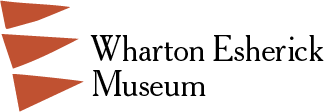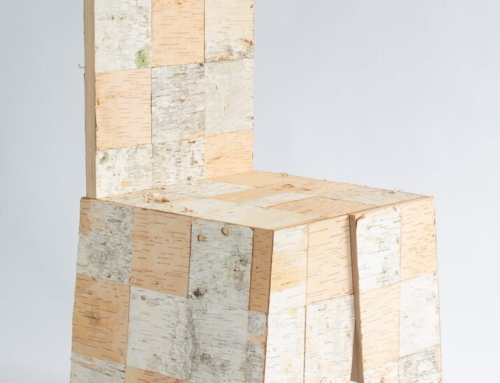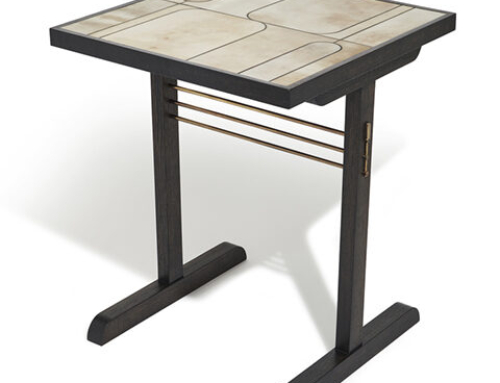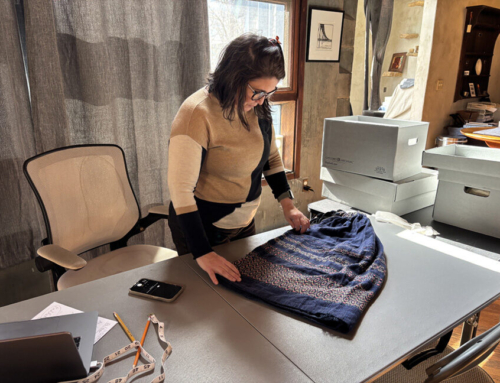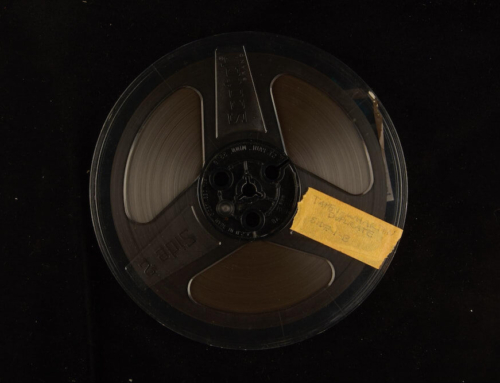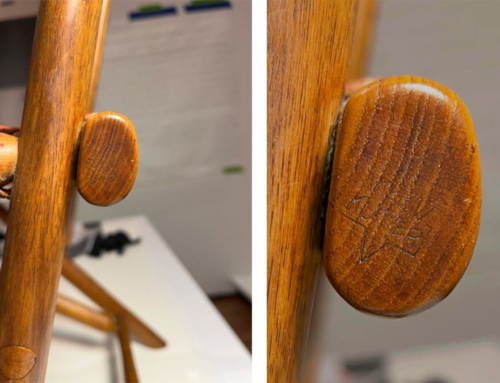Renewal: WEM’s 31st Juried Woodworking Exhibition is now on view, with the prizewinning works displayed onsite in our Visitor Center, and the complete show available as a virtual exhibition and accompanying publication. Renewal appears in many forms throughout Esherick’s career, whether through personal journeys that led him to new materials and media, renewed uses for found objects — as seen in his Hammer Handle Chair and Wagon Wheel Chair — or by his renewed take on the very definitions of sculpture, furniture and architecture. The enthusiastic response to this open call for entries reveals just how resonate the theme of renewal remains for contemporary makers. Each artist approached renewal from a unique perspective, and while the works all contain wood in some way, the final pieces offer interpretations ranging from material properties, historical resonance, inherent narratives, and metaphorical potential.
Over the course of the exhibition, which is on view through September 7, 2025, we are delighted to share a little more about our prizewinning artists with you. We asked each of them a few questions and learned a bit more about their work, practice, and lives. We hope you enjoy our conversation below with Sara Tabbert, the honorable mention prizewinner in the Renewal exhibition.
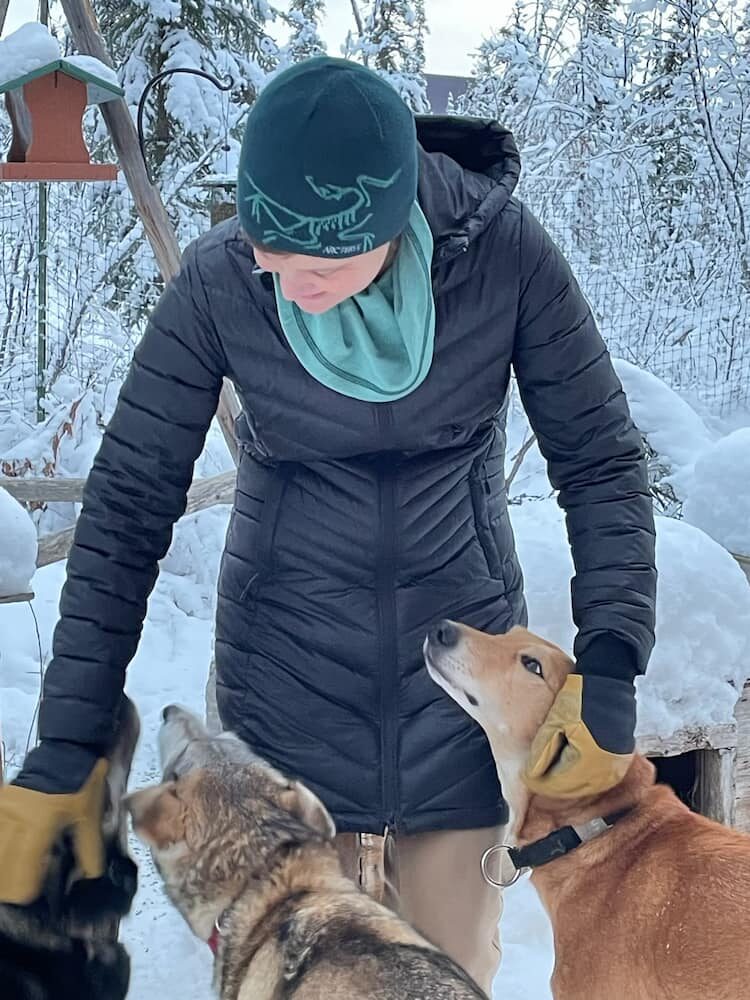
Can you give us an overview of your pieces Intersection and Passing Through and what you were thinking as you made each of them?
I made both of these pieces last summer during my WARP residency through the Museum for Art in Wood in Philadelphia. They are both related to exploring, figuring out how to navigate, being excited by, and being completely overwhelmed by a big city. There’s a lot of backtracking and getting turned around, making a map of a new and very different place. I was trying to record some of the visual contradictions and things that get slammed together in an urban environment, and all the ways I found this beautiful.
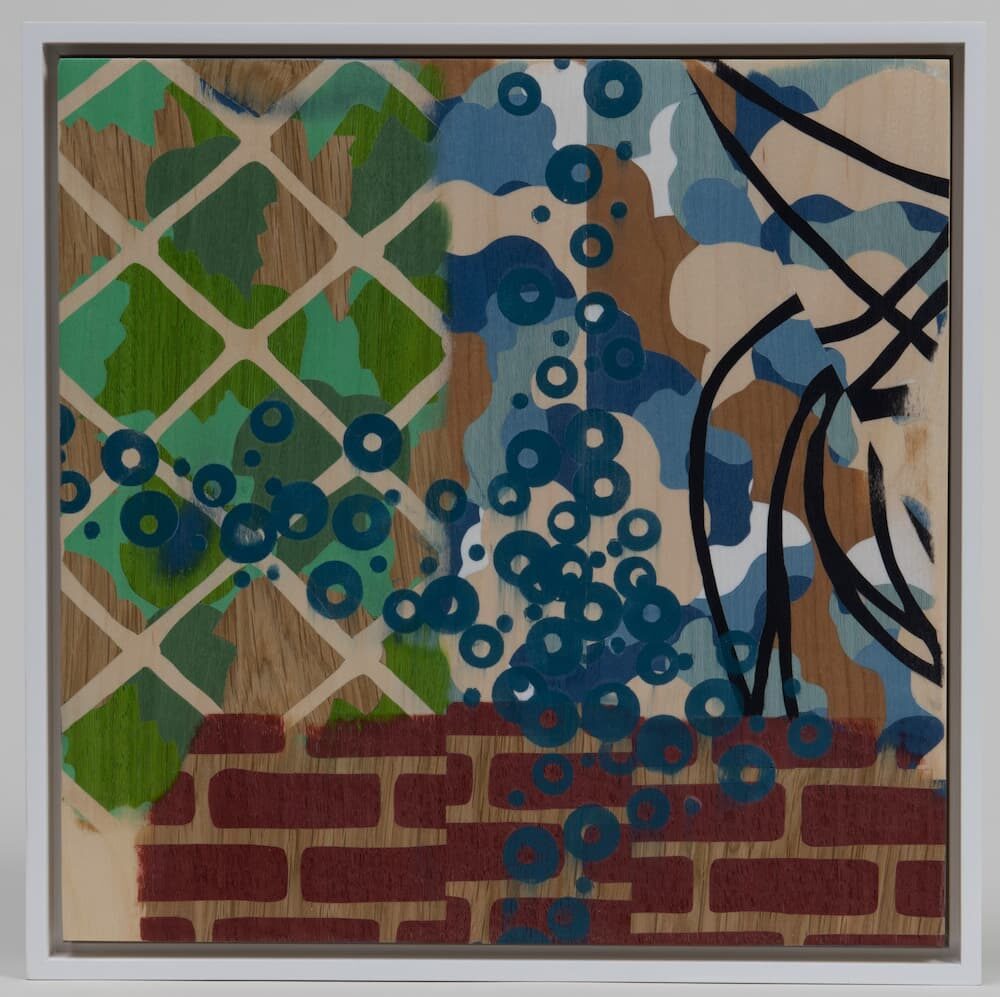
Sara Tabbert, Intersection, 2024. Wood veneer, printmaking ink on cradled panel, 12 x 12 inches.

Sara Tabbert, Passing Through, 2024. Wood veneer, printmaking ink, wood filler on carved cradled panel, 12 x 12 inches.
Tell us a bit more about your background. What brought you to creating art in general, and to working with wood in particular?
I stumbled in to art on accident, and very inconveniently, around the middle of college. In that process of discovery and re-routing I also stumbled into printmaking, which then later in graduate school led to woodcut prints. These opened the door to more ways of working with wood. I’ve also lived for almost 25 years with a woodworker/builder – the sound of home is the sound of the tablesaw. I had been passively interested in marquetry for a long time, but it wasn’t until I was introduced to some of the basics at the end of a three-month woodworking class in 2021 that I actually got my hands on veneer. It was good that they didn’t break it out until the end because I probably wouldn’t have paid attention to anything else. My intention at the time, and one I finally think I can begin to realize in about six months, is to incorporate some of these surfaces into objects, small cabinets, functional pieces. I’m still getting back on track after a studio fire in 2021 that knocked all woodworking plans to the side – doing something new requires a lot of time to learn and mess around, and I haven’t found the space for that in the chaos of starting over. I have been glad I was able to keep going on these marquetry pieces, as they remind me to keep working towards where I’d like to get to.
When did you first learn about Wharton Esherick? What about his work did you find interesting or inspiring? If you’ve been to the Studio, do you have a favorite room or piece?
I think I found some of his prints when putting together a presentation for a printmaking class I was teaching. I love seeing them as part of this very big, complex relationship with wood. You don’t see very many prints by woodworkers, even though it seems to me like a logical extension. I was able to visit the studio last summer, and though it’s hard to pick a favorite, I do have a photo of the lampshade that hangs over the table in the dining area that I look at a lot. Such a lovely space.
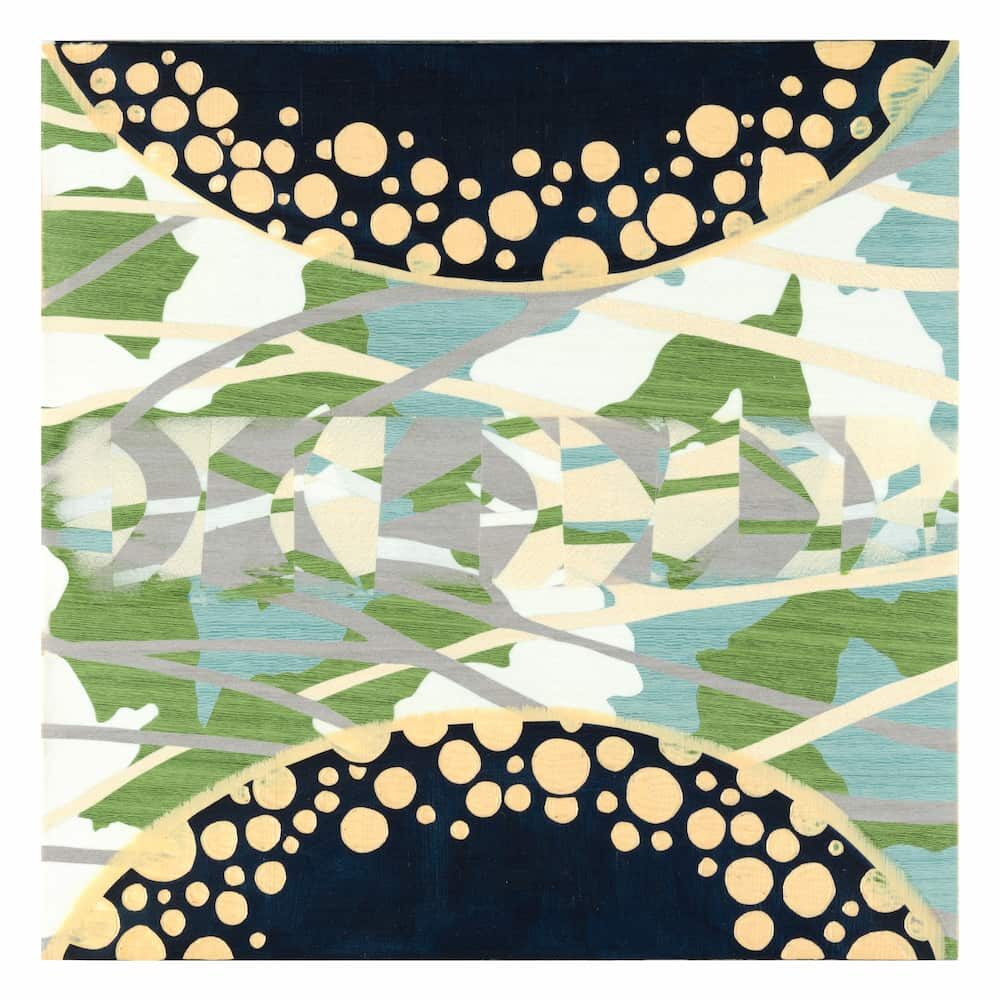
Sara Tabbert, Wheels of the Season
Esherick often drew inspiration from the world around him and his daily life — whether creating depictions of his farmhouse home, relief-carving birds, or incorporating the gesture of a dancer into a furniture piece. Similarly, you seem to draw inspiration — often in the form of shapes and patterns — from the world around you. Can you tell us more about your process? How do you pick and choose this source material? Are there themes that you continue to return to?
I think making is my excuse for looking and exploring. I’m always on the hunt for the less-obvious but compelling element in my surroundings, wherever it is. I live in a place that is 99% visually defined by a specific mythology about grand landscapes. I have zero interest in any of that, because it’s only a small part of a much more complicated story. I think I bring that position of turning away from what’s expected to any environment I am working from. I’m very interested in the space where what is made by people/left by people in the landscape interacts with the natural environment, that friction, that contradiction. Last summer in Philadelphia I was made the best kind of crazy by the orange insulators on electrical wires against the blue sky, the line work of other wiring, fences and weeds, ornament on ragged buildings. I found it all so lovely, so surprising. In the big picture, I think the start of caring about something is being interested in it, and that interest is helped by seeing the beauty in it. Unfashionable, I know, to talk about beauty as a contemporary artist, but I always will.
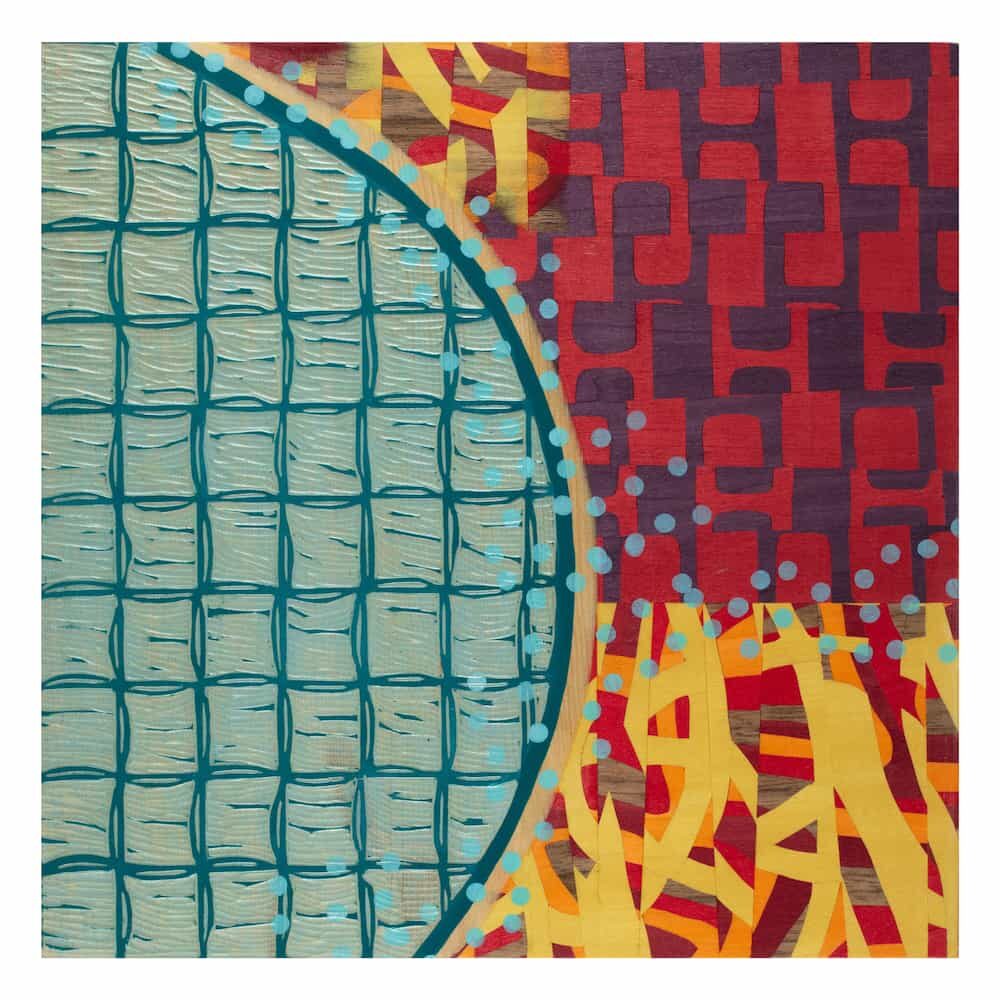
Sara Tabbert, Sidewalk Pool
Esherick was trained as a painter but found great creative freedom when he began to explore printmaking and later woodworking. As someone trained as a printmaker who frequently works with wood and marquetry — do you see these works as an extension of your printmaking practice? Can you talk more about the techniques and processes that draw you toward (or away from) either?
I think I relate to that sense of creative freedom. In some ways, I’m approaching a “fine woodworking” technique relatively unencumbered by formal woodworking training and tradition. I definitely think I bring a printmaker’s outlook to the veneer work. For example, it seems perfectly logical to me that you’d layer veneer and sand some of it to failure, or sandblast through it, or carve away and fill in with wood filler, or apply a carveable thicker veneer layer on top. Or print on it, or cut holes in it, or let the plywood substrate show through. A lot of printmaking is pushing and pulling surfaces and building things up/taking them back down. It’s also kind of fun to take something with a somewhat fussy tradition of perfection and really wail on it until it turns into something else, while also executing the precise technical elements well. I like the riskiness of potentially messing up something you spent a WHOLE LOT OF TIME ON by trying something different.
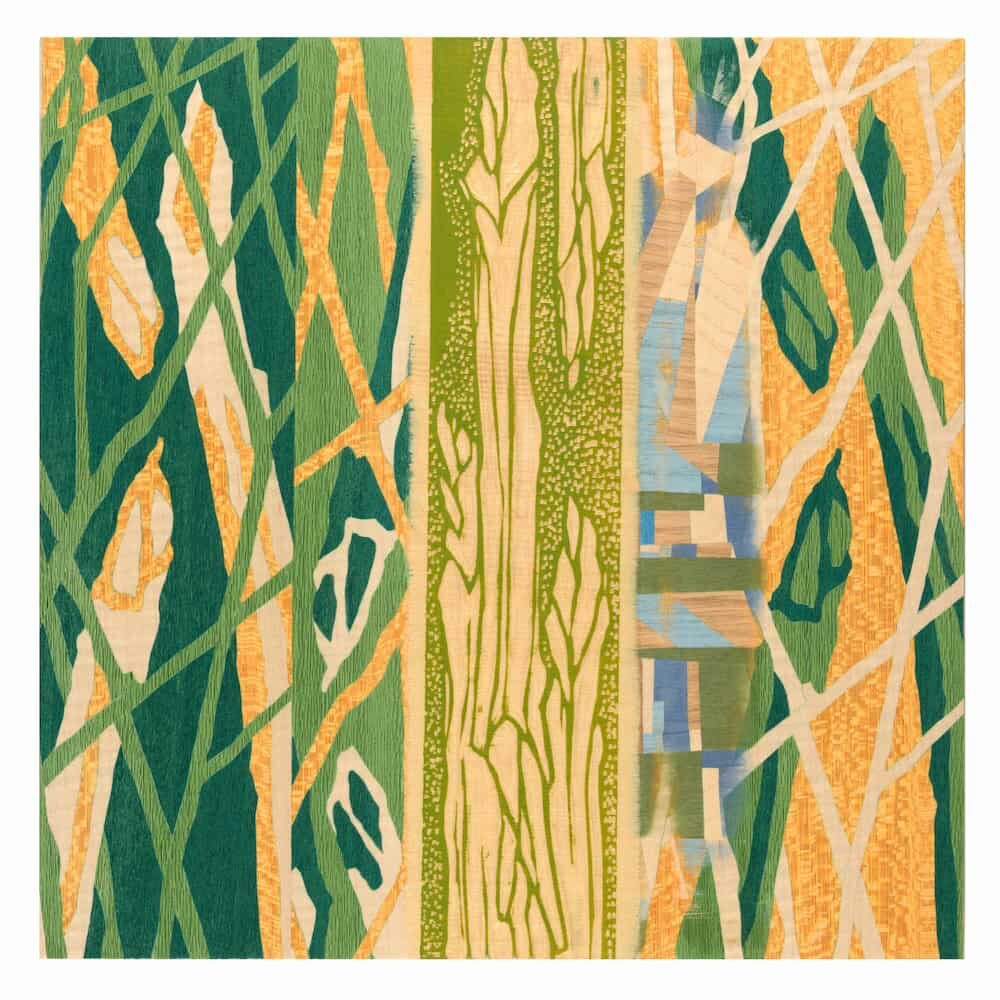
Sara Tabbert, Greening
We are excited to continue to follow along with you and your wonderful work! What are you most excited about in your practice right now and/or on the horizon?
I responded to the current state of affairs in the country by saying “yes” to way too many things. I’m getting ready for four exhibits between August and February, three in Alaska and one in Oregon. (Yikes!) My reward for making it through all this work is a residency in May at Contemporary Craft in Pittsburgh, which I am very excited about. I wish Pennsylvania wasn’t so far from Alaska, because it seems to be my art place right now.
» Visit Renewal: WEM’s 31st Annual Juried Woodworking Exhibition online
» Learn more about Sara Tabbert
Post written by Larissa Huff, Social Media and Communications Manager
August 2025
